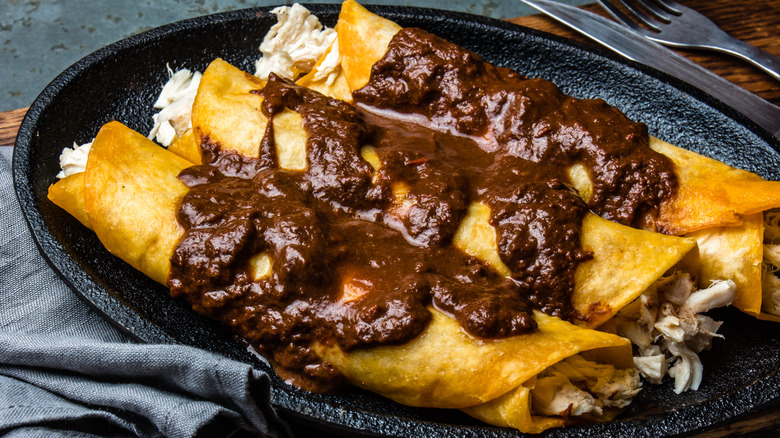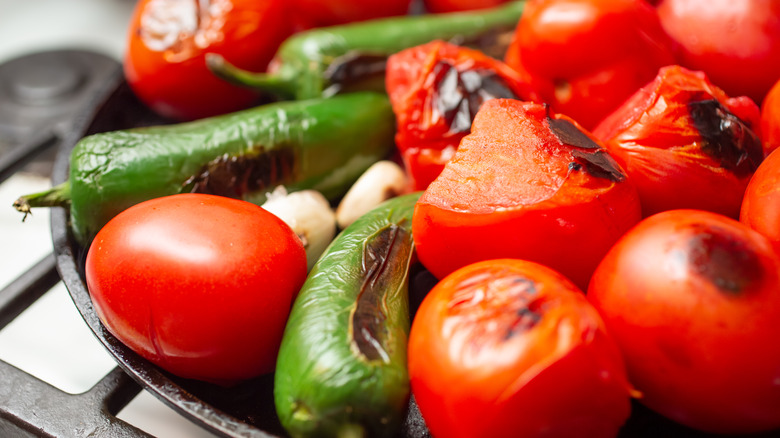Why Tomatoes Often Look Different When Used In Mexican Cooking
Mexican food is a marvel of unique and vibrant flavors as exciting and zingy as its hot, tropical geography and vivacious culture. Behind any Mexican dish is a list of Mexican food crops that include some of the most globally ubiquitous ingredients of the modern era like chilies, corn, squash, avocados, chocolate, and vanilla. Tomatoes are another rival for the most famous Mexican crop of all. While you may be used to eating them raw in salads and sandwiches and stewed into pasta and pizza sauces, Mexicans use a completely different technique to cook and incorporate them into their world-famous dishes.
In an exclusive discussion about authentic Mexican cuisine between Tasting Table and famed Mexican chef Roberto Santibañez, he acknowledges that non-Mexicans "may balk when [they] see a Mexican dish with tomatoes that were roasted without oil until they're dark brown, blistered, and just cooked through." Here, he refers to the quintessential Mexican cooking technique of using the comal, or griddle. Fire-fueled griddles are an iconic fixture in Mexican street food stalls, restaurants, and households, responsible for everything from tortillas to tacos.
Coincidentally, they're also used to sear and blister tomatoes, chilies, onions, and garlic, converting them into the flavors that, Santibañez argues, "make Mexican dishes taste recognizably Mexican." Blistering tomatoes over a dry griddle imparts that unique fire-roasted flavor and succulent juiciness that you might have thought could only happen under an oven broiler. These comal-roasted tomatoes have become the backbone of every Mexican salsa and tomato-based stew.
How to easily blister tomatoes and use them in authentic Mexican recipes
Most Mexicans aren't accustomed to using ovens; they leave baked goods to the bakeries or panaderías and reposterías. If ovens are even in a Mexican home, they're more likely to be used as storage space for pots and pans. This is precisely because of the dominance of comal and grilling as the main cooking methods. Blistering tomatoes on a comal is an incredibly easy process that involves no preparation. All you do is place a whole tomato on the hot griddle and turn it every minute or so until all sides brown or start to blister.
Mexicans use this same method for chilies, from jalapeños to the larger poblanos used to make chiles rellenos. It even extends to onions and garlic. The dry roasting caramelizes these ingredients, delicately cooking their insides while adding a unique smokiness. Most iterations of salsa roja and salsa verde start with throwing the chilies, onions, and tomatoes or tomatillos on the comal. You can also use a blend of blistered tomatoes, onions, and chilies as the base for stewed meat dishes like tinga de pollo or tortilla soup.
If you don't have a Mexican comal, a pancake griddle or cast iron skillet is a perfect substitute. You can place whole tomatoes over the grates of a grill if you're having a barbecue. Of course, you can also use the broiler setting of your oven to blister tomatoes despite its incompatibility with authentic Mexican techniques.

